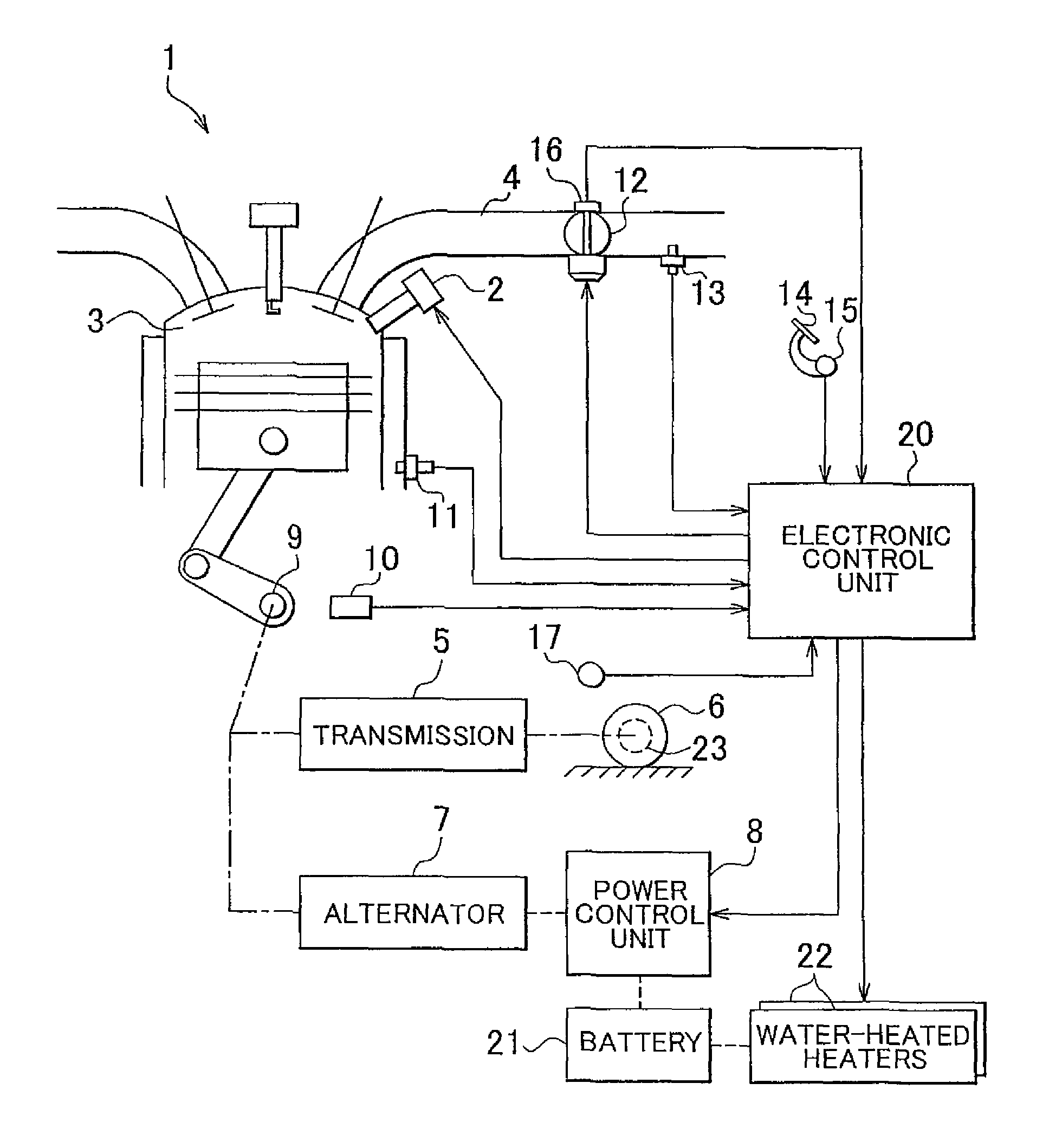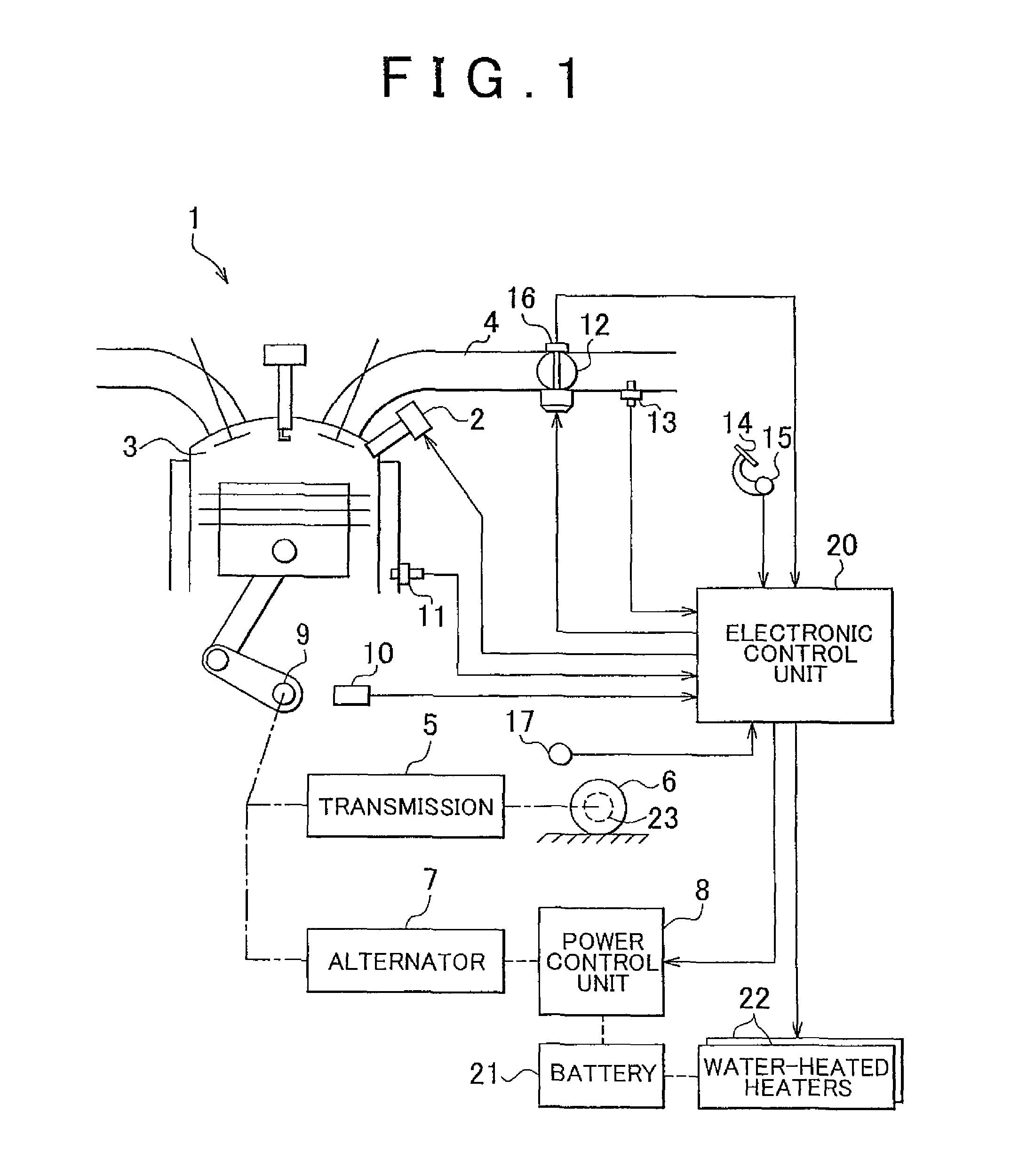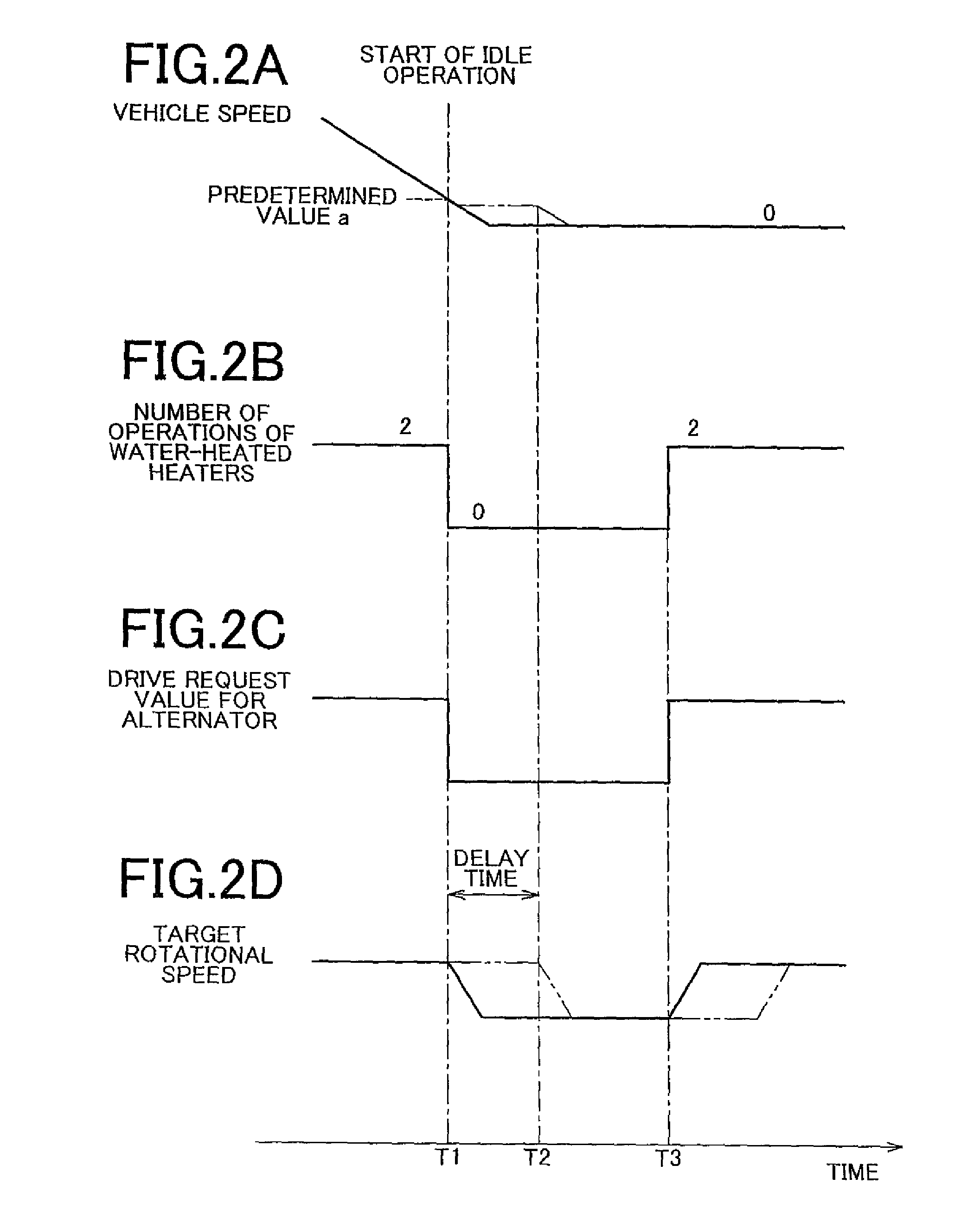Control apparatus and method of controlling internal combustion engine mounted on vehicle
a technology of control apparatus and internal combustion engine, which is applied in the direction of electric control, machines/engines, speed sensing governors, etc., can solve the problems of engine not serving as a braking force, large driving force applied to the driving wheels of the vehicle, and taking a long time to stop the vehicle from traveling
- Summary
- Abstract
- Description
- Claims
- Application Information
AI Technical Summary
Benefits of technology
Problems solved by technology
Method used
Image
Examples
first embodiment
[0029]The first embodiment in which the invention is applied to an engine mounted on a rear-wheel-drive automobile will be described hereinafter with reference to FIGS. 1 to 3.
[0030]In an engine 1 shown in FIG. 1, air is drawn from an intake passage 4 into a combustion chamber 3, and an amount of fuel appropriate for this intake air amount is injected from a fuel injection valve 2 and supplied to the combustion chamber 3. Thus, as the amount of intake air increases through the adjustment of the opening degree of a throttle valve 12 provided in the intake passage 4, the amount of the mixture burned in the combustion chamber 3 increases and the power output of the engine increases. A crankshaft 9 as an output shaft of the engine 1 is connected to the driving wheels (rear wheels) 6 of the automobile via a drive train that includes a transmission 5 such as an automatic transmission or the like. A brake 23 applies a braking force to the driving wheels 6 for stopping the rotation of the d...
second embodiment
[0055]Next, the invention will be described with reference to FIGS. 4A to 4D. When the drive request value for the auxiliary is large upon a shift of the engine 1 to idle operation in the process of stopping the automobile, the target engine speed is also high. Therefore, the drive request value for the auxiliary is reduced rapidly and drastically, and the target engine speed is also reduced rapidly and drastically on the basis of reduction of the drive request value. In this case, if the drive rate of the auxiliary cannot be reduced in good response to a drastic reduction in the drive request value for the auxiliary, reducing the target engine speed by a value equivalent to the reduction in the drive request value before the lapse of a delay time, when the automobile is traveling on a road surface with low friction coefficient, may cause the engine 1 to stall. That is, high rotational resistance is produced in the engine 1 to drive the auxiliary during a period in which there is a ...
PUM
 Login to View More
Login to View More Abstract
Description
Claims
Application Information
 Login to View More
Login to View More - R&D
- Intellectual Property
- Life Sciences
- Materials
- Tech Scout
- Unparalleled Data Quality
- Higher Quality Content
- 60% Fewer Hallucinations
Browse by: Latest US Patents, China's latest patents, Technical Efficacy Thesaurus, Application Domain, Technology Topic, Popular Technical Reports.
© 2025 PatSnap. All rights reserved.Legal|Privacy policy|Modern Slavery Act Transparency Statement|Sitemap|About US| Contact US: help@patsnap.com



